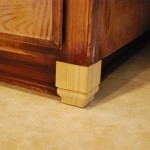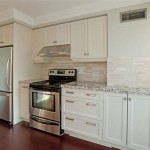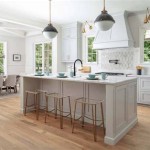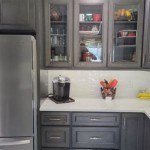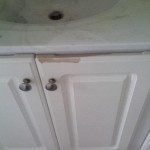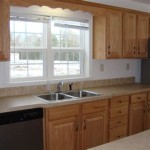Corner Kitchen Cabinets: Optimizing Space and Design
Corner kitchen cabinets often present a design challenge in kitchen layouts. They can become awkward, underutilized spaces if not properly planned. Effective corner cabinet design focuses on maximizing storage accessibility and integrating seamlessly with the overall kitchen aesthetic. This article explores different corner cabinet designs, their functionalities, and considerations for successful implementation.
The primary goal of corner cabinet design is to transform a potentially wasted area into a functional and aesthetically pleasing part of the kitchen. Understanding the variety of options available allows homeowners and designers to make informed decisions tailored to their specific needs and kitchen space.
Types of Corner Kitchen Cabinet Designs
Several common corner cabinet configurations address the challenge of accessing and utilizing corner spaces. These include blind corner cabinets, lazy Susan cabinets, corner drawers, and angled front cabinets. Each type presents unique advantages and disadvantages, impacting both storage capacity and ease of use.
Blind Corner Cabinets: These cabinets extend into the corner, creating a significant storage area. However, the internal space is often difficult to access, particularly items stored at the back. Blind corner cabinets typically require specialized hardware to improve access, such as pull-out shelves or swing-out mechanisms. These mechanisms allow users to bring items from the back of the cabinet to the front, making them easily reachable. Without such mechanisms, blind corner cabinets can become repositories for infrequently used items.
Lazy Susan Cabinets: A lazy Susan cabinet features rotating shelves within the corner cabinet. This design allows for easy access to items stored in the corner. The rotating shelves bring items from the back to the front with a simple spin. Lazy Susan cabinets are particularly effective for storing pots, pans, and other frequently used kitchen items. These cabinets come in various materials and designs, including full-circle and pie-cut configurations. Full-circle lazy Susans offer maximum storage space, while pie-cut lazy Susans are designed to fit snugly in the corner.
Corner Drawers: Corner drawers offer a modern and efficient solution for corner spaces. These drawers are typically angled to fit into the corner and provide accessible storage for utensils, cookware, and other kitchen items. Corner drawers maximize storage space and reduce the wasted space often associated with traditional corner cabinets. They are a visually appealing option and can contribute to a sleek and contemporary kitchen design. The intricate construction of corner drawers often makes them a more expensive option compared to other corner cabinet solutions.
Angled Front Cabinets: Angled front cabinets feature a cabinet door that is angled across the corner. This design creates a wider opening compared to traditional square corner cabinets, improving access to the storage space inside. Angled front cabinets can be combined with internal shelves or drawers to further enhance functionality. They offer a visually distinct look and can be used for both upper and lower cabinets.
Open Shelving: While less common for lower corner cabinets, open shelving can provide a decorative and accessible alternative. Open shelves can display cookware, plants, or decorative items, adding visual interest to the kitchen. This design choice requires careful consideration of the aesthetic and practicality of displaying items in an open space. Consistent cleaning and organization are crucial to maintain the appeal of open shelving.
Factors to Consider When Choosing Corner Cabinets
Selecting the appropriate corner cabinet design requires careful consideration of several factors, including kitchen layout, storage needs, budget, and aesthetic preferences. A thorough assessment of these factors ensures the chosen corner cabinet design effectively addresses the challenges of corner spaces and complements the overall kitchen design.
Kitchen Layout: The overall layout of the kitchen significantly influences the choice of corner cabinet design. The available space, the position of appliances, and the flow of traffic within the kitchen all play a role in determining the most suitable configuration. In smaller kitchens, maximizing storage space is often a priority, making options like lazy Susans or corner drawers particularly appealing. In larger kitchens, the design can focus more on aesthetics and ease of access, allowing for options like angled front cabinets or open shelving.
Storage Needs: The specific storage needs of the homeowner are another critical factor. Determine what types of items will be stored in the corner cabinet and how frequently they will be accessed. If the corner cabinet will primarily store large pots and pans, a lazy Susan or a blind corner cabinet with pull-out shelves may be the most appropriate choice. If the corner cabinet will store smaller items, such as utensils or spices, corner drawers may be a more efficient solution.
Budget: The cost of different corner cabinet designs can vary significantly. Blind corner cabinets with basic hardware are typically the least expensive option, while corner drawers and customized pull-out systems are often the most expensive. Setting a budget beforehand helps narrow down the options and ensures that the chosen corner cabinet design is financially feasible. It is crucial to factor in the cost of installation, as some corner cabinet designs may require professional installation.
Aesthetic Preferences: The visual appeal of the corner cabinet should complement the overall style of the kitchen. Consider the color, material, and hardware of the corner cabinet and how it integrates with the surrounding cabinetry and countertops. Corner drawers and angled front cabinets often provide a more modern and streamlined look, while traditional kitchens may benefit from the classic appearance of lazy Susan cabinets.
Accessibility: Accessibility is a key consideration, especially for individuals with mobility limitations. Ensure that the chosen corner cabinet design allows for easy access to items stored inside. Pull-out shelves, lazy Susans, and corner drawers are all designed to improve accessibility. Consider the height and reach required to access the cabinet and choose a design that is comfortable and convenient for all users.
Installation and Maintenance of Corner Cabinets
Proper installation and regular maintenance are essential for ensuring the long-term functionality and durability of corner cabinets. Incorrect installation can lead to problems with alignment, stability, and ease of use. Regular cleaning and maintenance can prevent issues such as sticking doors, squeaky hinges, and damaged shelves.
Installation: The installation of corner cabinets often requires specialized knowledge and skills. Professional installation is recommended, particularly for complex designs such as corner drawers or blind corner cabinets with pull-out systems. A professional installer will ensure that the cabinet is properly aligned, leveled, and secured to the wall. Incorrect installation can compromise the stability of the cabinet and potentially damage the surrounding cabinetry or countertops.
Cleaning: Regular cleaning is essential for maintaining the appearance and hygiene of corner cabinets. Wipe down the exterior surfaces with a damp cloth and mild detergent to remove dirt and grime. Clean the interior shelves and drawers regularly to prevent the buildup of dust and food particles. Pay particular attention to areas that are difficult to reach, such as the back corners of blind corner cabinets. Use a vacuum cleaner with a hose attachment to remove dust and debris from hard-to-reach areas.
Maintenance: Routine maintenance can prevent minor issues from developing into more significant problems. Check the hinges and hardware regularly and tighten any loose screws. Lubricate the hinges with a silicone-based lubricant to prevent squeaking and ensure smooth operation. Inspect the shelves and drawers for signs of wear and tear and replace them as needed. If the corner cabinet features a pull-out system, check the mechanism regularly and ensure that it is operating smoothly. Clean the tracks and rollers of the pull-out system to prevent the buildup of dirt and debris.
Organizing: Proper organization can maximize the storage capacity and accessibility of corner cabinets. Use dividers, organizers, and containers to keep items neatly arranged. Group similar items together and store frequently used items in easily accessible locations. Avoid overcrowding the shelves and drawers, as this can make it difficult to find items and potentially damage the cabinet. Label the shelves and drawers to easily identify the contents.
By carefully considering the various design options, factors influencing the choice, and proper installation and maintenance techniques, homeowners and designers can effectively transform corner spaces into functional and aesthetically pleasing elements in the kitchen.

Kitchen Corner Cabinet Ideas For Your Home Designcafe
11 Corner Kitchen Cabinet Ideas For Storage Solution

Kitchen Design 2024 Corner Cabinet Ideas Grace In My Space

Foolproof Storage Solutions For Corner Kitchen Cabinets
11 Corner Kitchen Cabinet Ideas For Storage Solution

23 Kitchen Corner Cabinet Ideas For 2024 Pantry Design

6 Of The Best Solutions For Kitchen Corner Units Fitzgerald Kitchens

Corner Kitchen Cabinets Pictures Ideas Tips From
11 Corner Kitchen Cabinet Ideas For Storage Solution

Chic Corner Kitchen Cabinet Storage Ideas Design Cafe
Related Posts

